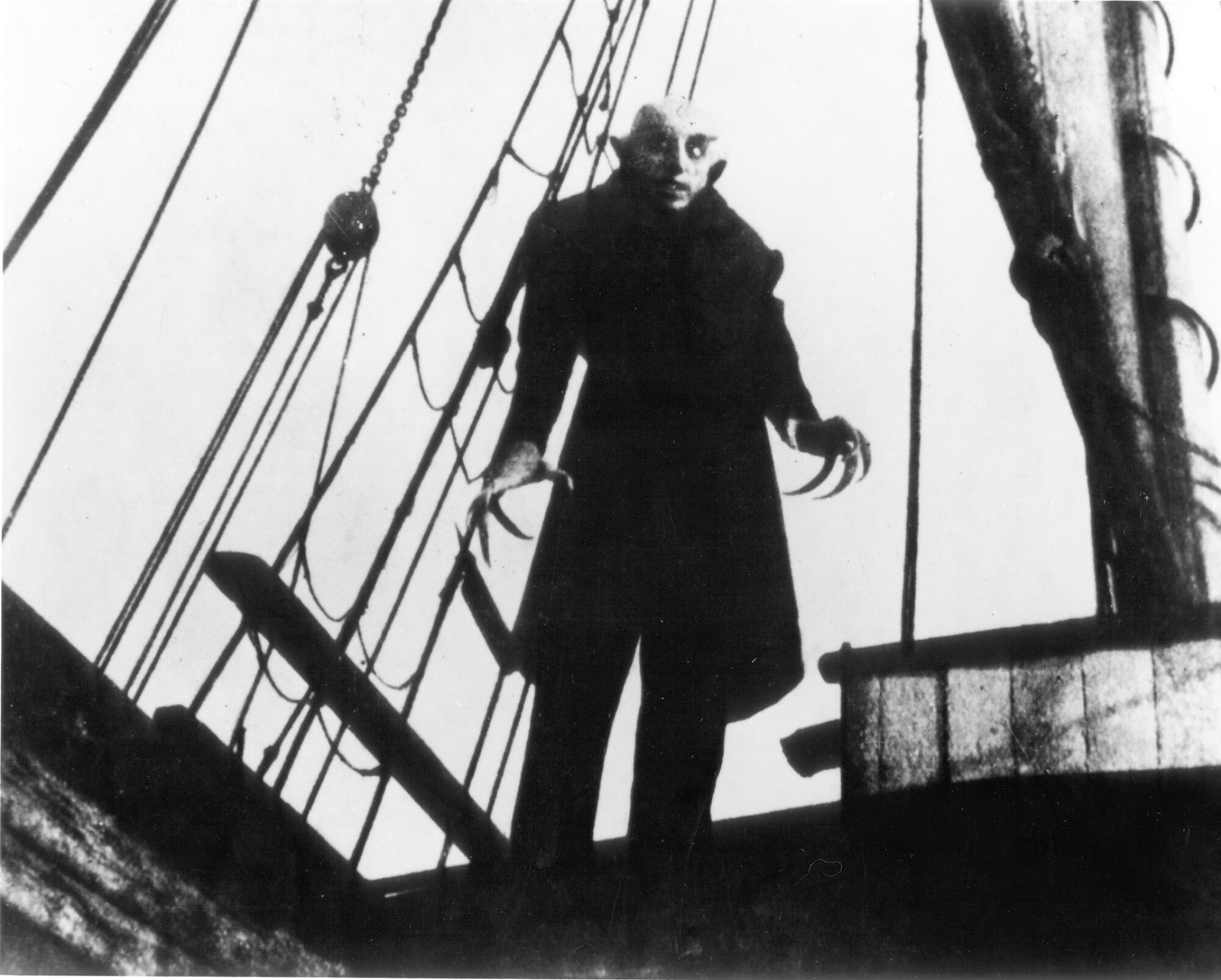“Nosferatu” began its undead life in 1922 as a silent, unauthorized adaptation of Bram Stoker’s 1897 novel “Dracula.” But F.W. Murnau’s film, subtitled “A Symphony of Horror,” soon came to be regarded as a masterwork in its own right, a high-water mark of German Expressionism and a template for future vampire movies. The film differed from the novel in key respects, including location (from London to Germany) and the name of the bloodsucker (from Dracula to Orlok). None of this stopped the Stoker estate from suing and demanding the destruction of all prints. Fortunately, some survived.
That was more than 100 years ago. Since then, “Nosferatu” has reemerged from the coffin twice. In 1979, Werner Herzog made “Nosferatu the Vampyre.” And now, Robert Eggers, who has been chipping away at the occult since his stripped-down 2015 debut, “The Witch,” has unleashed his own “Nosferatu,” a gothic beauty that crystallizes the primal vampire themes of sex and death and stands on its own as a classic of the genre.
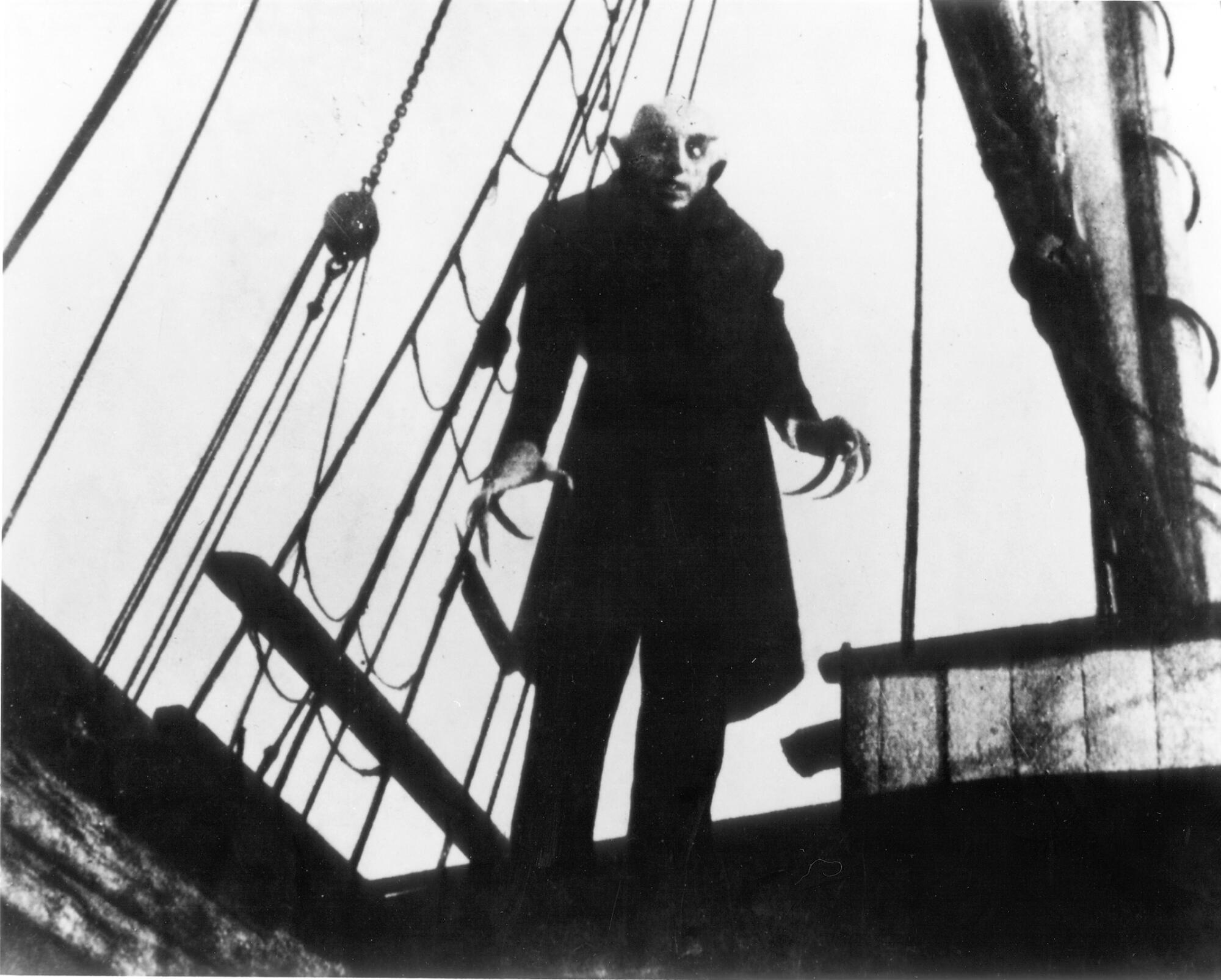
Max Schreck starred as the vampire in F.W. Murnau’s 1922 “Nosferatu.”
(Photofest)
The parameters of the story remain the same across the decades. A solicitor is sent by his eccentric employer to a faraway mountain locale to close a deal with a reclusive count. Surprise! The client is a vampire, and the eccentric employer is under his spell. Even worse, the vampire covets the solicitor’s wife, and he’ll be moving into the old manse across the street from the couple. He will bring with him a great many rats and what appears to be a nasty plague. And there goes the neighborhood.
Despite working from the same playbook, each film has its own personality and approach to the material. It all starts with Murnau’s original, which gave us the towering, severe and altogether terrifying Max Schreck as Count Orlok some nine years before Bela Lugosi played the count as a suave Lothario in Tod Browning’s “Dracula.” Still a favorite on the repertory scene, where it plays with musical accompaniment from live ensembles and now, thanks to the Silents Synced series, Radiohead’s “Kid A” album, the original “Nosferatu” matches an indelible performance with a director who would reach his peak as an avant-garde sensualist five years later with the dark romance “Sunrise.”
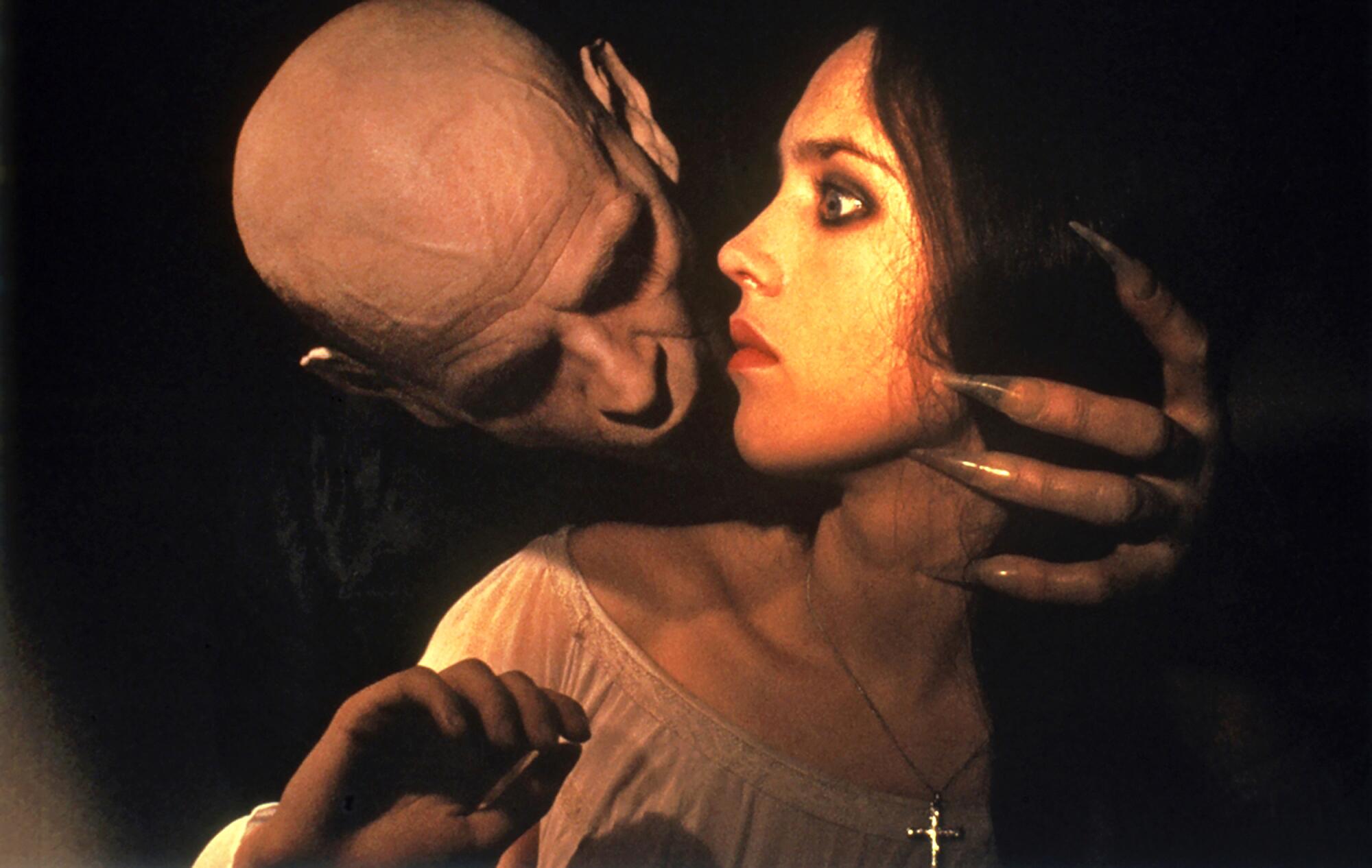
Klaus Kinski and Isabelle Adjani star in Werner Herzog’s 1979 “Nosferatu the Vampyre.”
(Shout Factory/Bleeding Light Film Group)
The earlier film showcases Murnau’s already fluid camerawork, particularly his command of shadow play and low angles that made the 6-foot-3 Schreck seem like a force of otherworldly evil. (In another lifetime, I wrote a rambling college paper analyzing the arrival of the ghost ship ferrying Nosferatu and his legion of rats to the fictional German town of Wisborg. Ask me about it sometime, and you will surely regret it.)
Herzog, already a giant of New German Cinema with movies including “Aguirre, the Wrath of God” and “Stroszek” under his belt, revered Murnau’s film. His own rendition, like so many of his films, is verdant and meditative, a vampire movie to lose oneself in, or at least to bathe in as you contemplate the story’s metaphysical layers. When Klaus Kinski’s vampire (who actually goes by the name Dracula) brings his plague to little Wismar, the citizens hold a danse macabre and a Last Supper, like something out of “The Seventh Seal.” Kinski is by far the most melancholy of the “Nosferatu” trio, almost emo in his despair. “Time is an abyss, profound as a thousand nights,” he laments. “To be unable to grow old is terrible.” You can picture him slinking off to a goth club to sway and stare away the night to the strains of Bauhaus’ “Bela Lugosi’s Dead.”
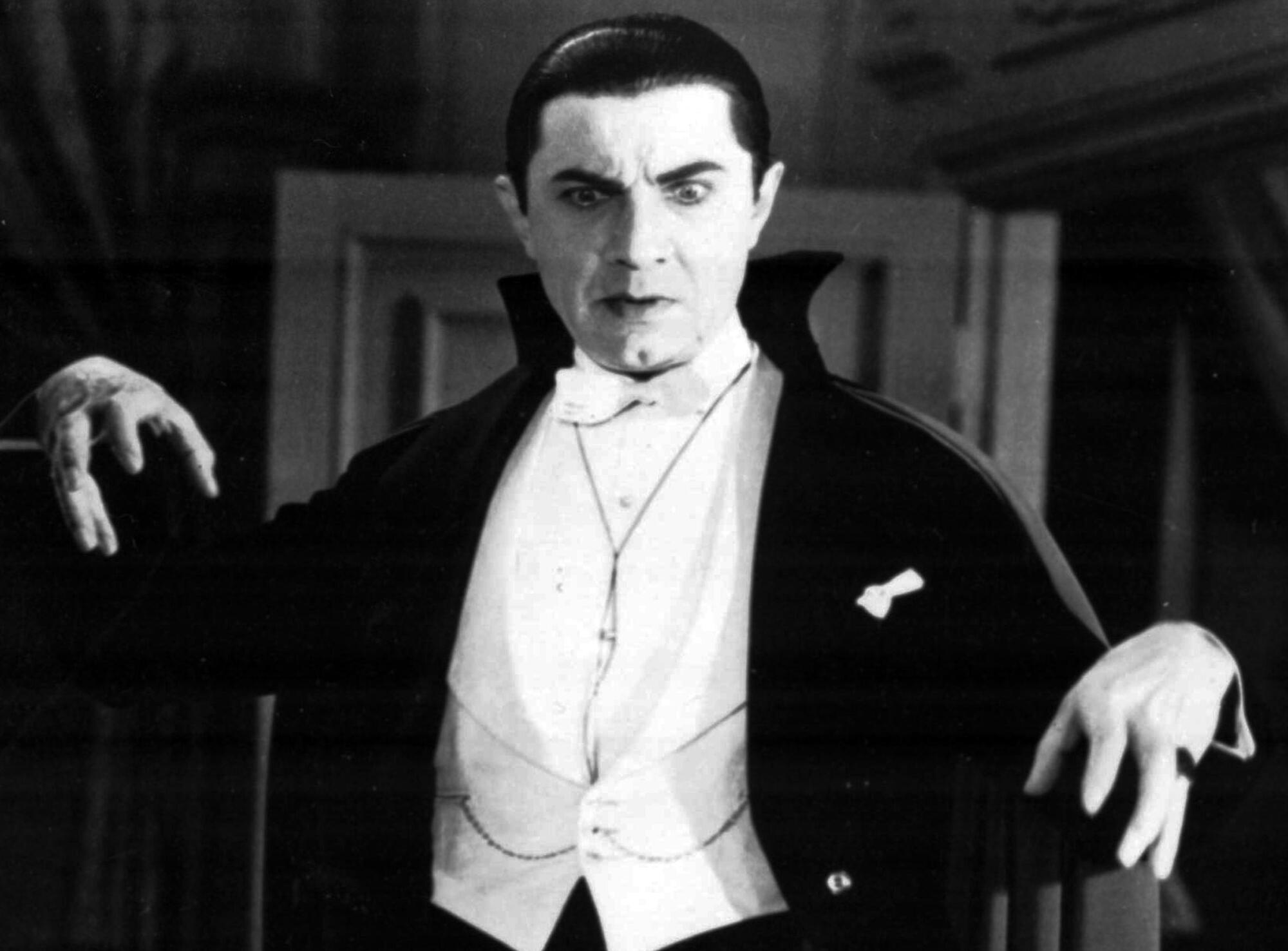
Bela Lugosi portrays the evil Count Dracula as a suave Lothario in Tod Browning’s 1931 classic “Dracula.”
(AP)
Which brings us to the new “Nosferatu,” which works splendidly in relation to the other two films and as its own feverish entity. It plays like a love triangle in which the three principals — Ellen Hutter (Lily-Rose Depp), her solicitor husband, Thomas (Nicholas Hoult), and the gruesome Orlok (Bill Skarsgård, sounding like an emphysemic kaiser) — invade one another’s dreams. Here Orlok is presented as a manifestation of Ellen’s forbidden desires. She doesn’t just sleepwalk when under the count’s spell, like her two predecessors; she experiences fits, both rapturous and terrible, that seem to border on orgasm. At one point, she compares Orlok to a serpent inside her body. The count brings plague to everyone, but he is also Ellen’s private demon. The others are just along for the ride.
At times this “Nosferatu” owes a debt to “The Exorcist,” as well as a more esoteric horror movie, Andrzej Żuławski’s “Possession” (1981), which stars Isabelle Adjani, who played Lucy Harker in Herzog’s “Nosferatu.” Another fun game of connect-the-“Nosferatu”-dots: Willem Dafoe, who plays the Van Helsing-like Albin Eberhart von Franz in Eggers’ film, got to play a very Method Max Schreck (opposite John Malkovich’s Murnau) in the “Nosferatu”-inspired lark “Shadow of the Vampire” (2000). The history of horror, particularly this set of horrors, can feel like a hall of mirrors.
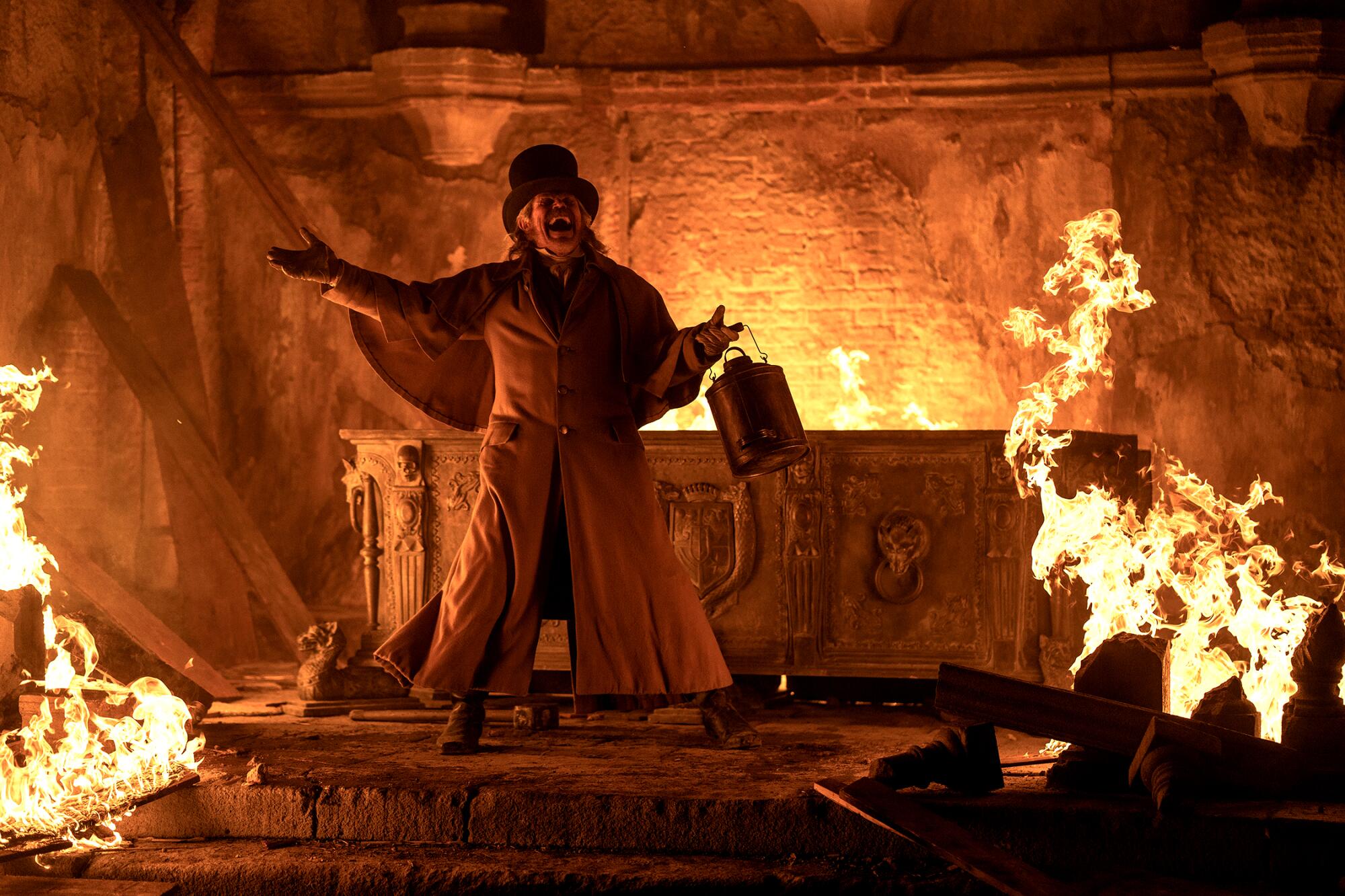
Willem Dafoe stars as Professor Albin Eberhart von Franz in director Robert Eggers’ recent release, “Nosferatu.”
(Aidan Monaghan/Focus Features)
There’s a fierceness to the romantic doom of the new “Nosferatu,” a muscular fatalism achingly vulnerable and ferocious, feminine and masculine, both and neither. It is a resonant paean to darkness and death, modern but also eager to build on the worlds created by its predecessors.
